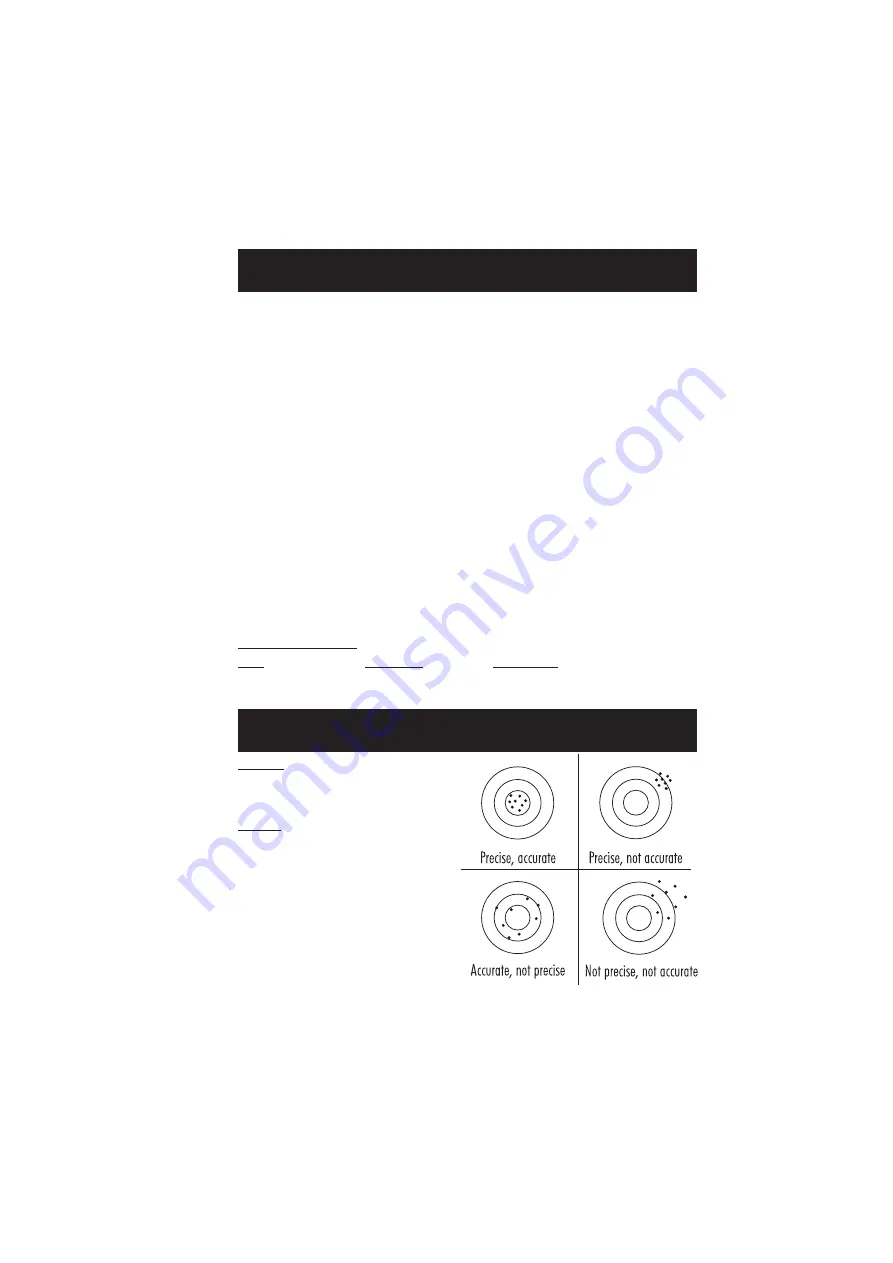
5
SPECIFICATIONS
PRECISION AND ACCURACY
Range
0.00 to 3.00 mg/L
NH
3
-N
Resolution
0.01 mg/L
NH
3
-N
Accuracy
±0.04
mg/L ±4% of reading@ 25°C
Typical EMC Deviation
±0.01 mg/L
Light Source
Tungsten lamp
Light Detector
Silicon Photocell with narrow band interference filter @ 420nm
Method
Adaptation of the ASTM Manual of Water and Environmental Technology,
method D1426-92 Nessler method. The reaction between ammonia
and reagents causes a yellow tint in the sample.
Environment
0 to 50°C (32 to 122°F); max 95% RH non-condensing
Battery Type
1 x 9 volt
Auto-Shut off
After 10' of non-use in
measurement mode;
after 1 hour of non-use in
calibration mode;
with last reading reminder.
Dimensions
192 x 104 x 69 mm (7.6 x 4.1 x 2.7")
Weight
360 g (12.7 oz.).
REQUIRED REAGENTS
Code
Description
Quantity/test
HI 93700A-0
Liquid Reagent
4 drops (6 for sea water analysis)
HI 93700B-0
Liquid Reagent
4 drops (10 for sea water analysis)
Precision
is how closely repeated measurements
agree with each other. Precision is usually
expressed as standard deviation (SD).
Accuracy
is defined as the nearness of a test
result to the true value.
Although good precision suggests good accuracy,
precise results can be inaccurate. The figure
explains these definitions.
In a laboratory using a standard solution of
1.50 mg/L ammonia-nitrogen (NH
3
-N) and a
representative lot of reagent, an operator obtained
with a single instrument a standard deviation of
0.05 mg/L.






































